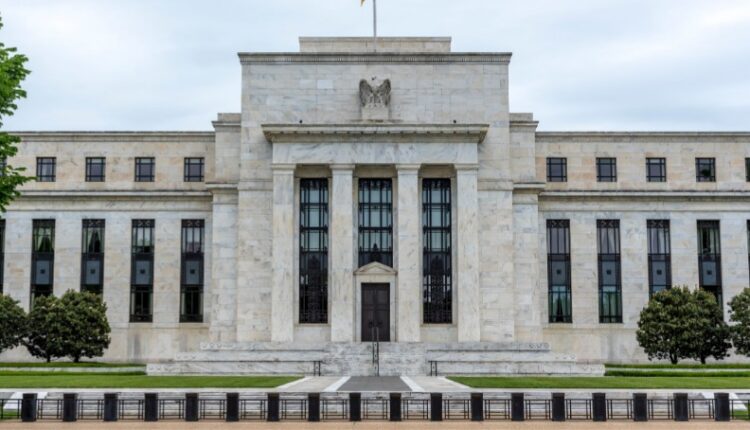
FED Governor Delivers Speech About The Impact Of CBDC On Retail Customers
On April 18, a current member, Michelle Bowman, of the Federal Reserve Board of Governors delivered a speech on central bank digital currencies (CBDC). The approximately 3540 words speech was given at the Georgetown University McDonough School of Business Psaros Center for Financial Markets and Policy in Washington, D.C.
Michelle Bowman is an American Attorney who took office as a member of the Board of Governors of the Federal Reserve System on November 2018 to fill an unexpired term ending January 31, 2020. She is the first person to fill the community bank seat on the board, a seat created in 2015 law. She was reappointed to the Board on January 23, 2020, and sworn in on January 30, 2020, for a term ending January 31, 2034.
TDR summarized some of Michelle Bowman’s most notable points on CBDC, as they relate to future Fed policy initiatives.
On CBDC and the Payment System…
There is ongoing discussion regarding the potential for CBDCs and other forms of digital money to improve the efficiency of payment systems. The issue is whether these new technologies can increase the speed of payments while lowering costs and frictions in the payment system. This question is being explored in the context of payment infrastructure in different countries, including for domestic and cross-border payments.
Improving payment speed, especially for retail payments, can be achieved without a CBDC. For example, the Federal Reserve’s FedNowSM Service will enable banks to offer customers real-time payment capabilities later this year.
In addition to speed, policymakers have suggested other reasons why a CBDC may be necessary in their respective countries. Some argue that a CBDC would enable large-value transactions between financial institutions, while others see CBDCs as a way to enhance international payments. Some policymakers believe that CBDCs are essential to preserving the role of central bank money in stabilizing the payment system and safeguarding monetary sovereignty, or to ensure that digital money is safe, uniform, and promotes innovation and competition.
On CBDC and Financial Inclusion…
Some people have questioned whether a potential U.S. CBDC and other innovations in money and payments could lead to financial inclusion. The statistics show that over 95% of households in the United States have at least one member of the household holding a checking or savings account. Among the remaining 4.5% who are unbanked, almost 75% have no desire to have a bank account, and around one-third stated a lack of confidence in banks as the reason for not having an account.
It is improbable that this group would consider the government more trustworthy than regulated banks. Unbanked households are also less likely to own mobile phones or have internet access, which would pose obstacles to CBDC adoption.
While there has been important research on these barriers to adoption, policymakers must also explore other ways to enhance financial inclusion, such as alternative means to distribute government benefits more efficiently and effectively by promoting financial literacy.
On CBDC for Implementation of Policy Objectives…
One question that policymakers are grappling with is whether new technologies, such as a potential CBDC, can be used to achieve policy goals beyond those directly related to ensuring a safe and efficient financial system. For instance, what if government benefits or payments were distributed via CBDC with an expiration date, requiring individuals to spend them within a specific timeframe?
While this approach could offer more control to policymakers, it could also be seen as restrictive and could harm consumers and businesses. It also raises concerns about politicizing the payments system and potentially limiting access to banking accounts.
Such a CBDC could also threaten the Federal Reserve’s independence, which is a cornerstone of the U.S. monetary system. Therefore, policymakers must carefully consider the implications of using a CBDC for policy objectives beyond its core function as a payment system.
On Declining Cash Use and CBDC…
One issue under consideration is whether a CBDC could offer a more efficient payment system by reducing costs and increasing the speed of transactions. Countries have launched faster payment systems and are exploring how central banks can support these systems to address specific inefficiencies, promote private-sector innovation, and provide a CBDC if cash usage decreases. Policymakers must also consider the privacy implications of CBDC and whether it can provide a better alternative than private-sector solutions.
Another important issue is whether a CBDC could provide the public with a more attractive alternative to cash in a world that may be moving away from cash-based payments. While many central banks have cited the importance of access to central bank money by the general public as a potential reason to issue a central bank digital currency, the Federal Reserve aims to ensure the continued safety and availability of cash, and a CBDC could be considered as a means to expand safe payment options, not to reduce or replace them.
On Stablecoins and CBDC…
There has been an emergence of stablecoins, which are private forms of money that aim to support trading in the crypto-asset ecosystem as both a payment method and a store of value. However, these stablecoins, which claim to have a one-for-one convertibility with the dollar, are less regulated, less secure, and less stable than traditional forms of money. Additionally, their structures and frameworks are opaque, which could raise concerns if they become widely used in day-to-day payments.
To address these shortcomings, a CBDC has been suggested as an alternative to stablecoins. Congress could also pass legislation to strengthen the regulation and oversight of stablecoins. It’s crucial to evaluate the digital asset landscape and understand how well-regulated stablecoins or a CBDC would interact with each other and with the broader payment system.
The view the speech by in its entirety, click here.



